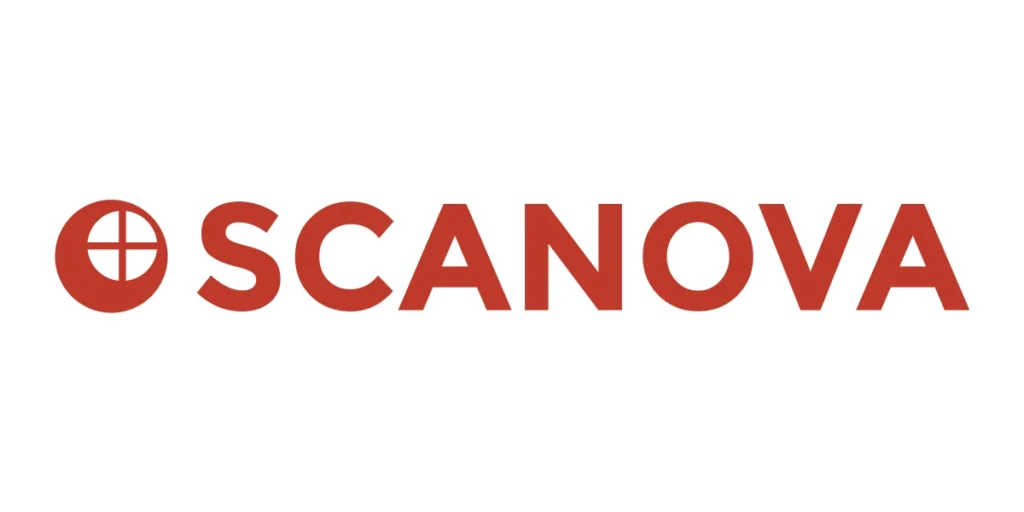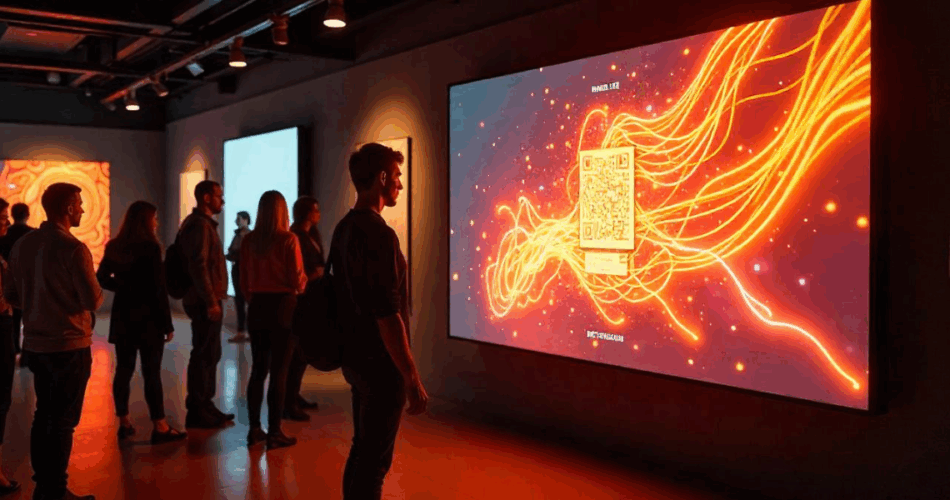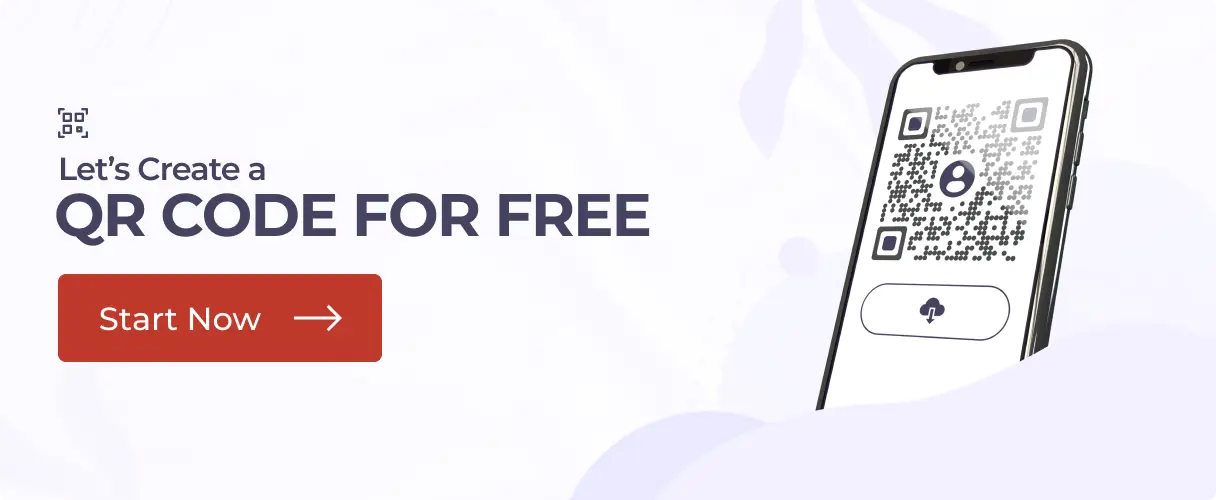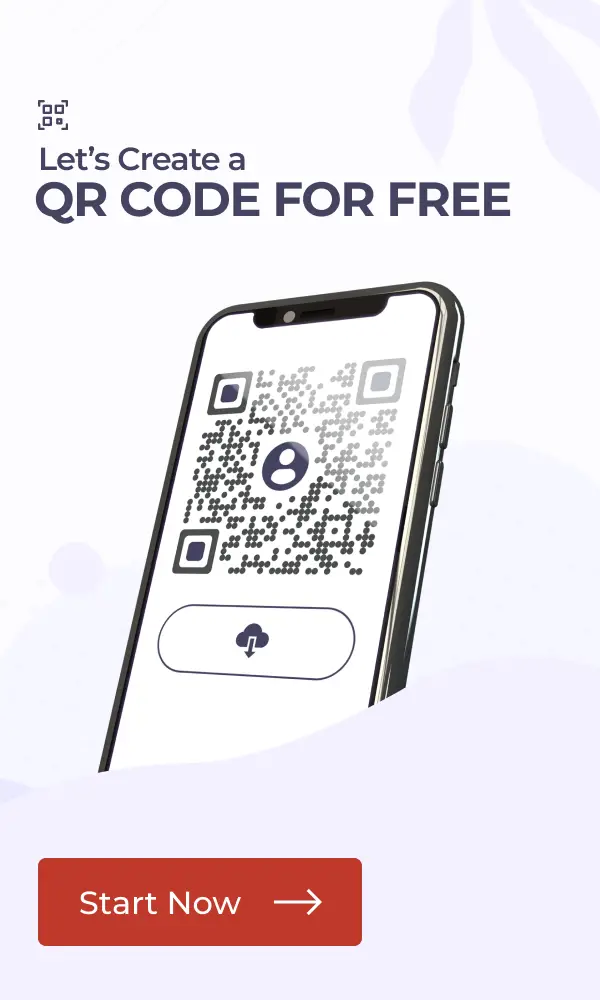In a nutshell: A random QR Code generator creates unique QR Codes instantly for testing, development, or general use. Dynamic QR Codes allow content updates without reprinting, while static QR Codes are permanent and completely free. Most generators support URL, text, email, WiFi, and vCard formats with high-resolution downloads for print and digital use.
A. What is a random QR Code Generator, and why do you need one?
A random QR Code generator is a specialized tool that creates unique QR Codes with random data or allows you to input specific content for instant QR Code creation.
These tools were originally created to easily create QR Codes for testing purposes or the odd gimmick found in games, where context isn’t hugely important.
Today’s QR Code usage has exploded dramatically. As of 2024, QR Codes are used in a much broader context, including both commercial tracking applications and convenience-oriented applications aimed at mobile phone users.
With an estimated 98 million users by the end of 2024, QR Codes have become essential for businesses, educators, and individuals alike.
A quality random QR Code generator serves multiple purposes.
Whether you’re a developer testing QR scanning applications, a marketer creating quick promotional codes, or someone who needs instant QR Codes for various projects, these generators provide the flexibility and speed you need.
B. How does a random QR Code Generator work?
Random QR Code generators operate through a straightforward process that transforms your input data into scannable QR Codes. Quick Response (QR) Codes are two-dimensional barcodes that encode text content.
QR Codes can contain over 4,000 characters, and can be scanned by any compatible barcode scanner in a fraction of a second.
The generation process involves several key steps. First, you input your desired content – whether it’s a URL, text message, contact information, or WiFi credentials.
The generator then converts this information into a matrix of black and white squares using established QR Code standards.
The codes generated meet all international standards, are compatible with all barcode scanners, do not add anything to the data, and provide codes that will never expire.
Modern random QR Code generators offer significant customization options. You can modify colors, add logos, adjust sizes, and choose from various design templates.
The best generators also provide different output formats, including PNG, JPEG, SVG, and PDF to meet various printing and digital display needs.
C. What are the best free random QR Code generators available online?
The market offers numerous excellent free QR Code generators, each with unique strengths and features.
Here are the top performers based on functionality, ease of use, and customization options.
1. Scanova

Scanova emerges as the industry leader and best overall solution for random QR Code generation. Rated 4.6 on G2, Scanova offers Dynamic QR Codes, unlimited scans, extensive customization options, and advanced analytics.
Trusted by over 10,000 global brands, including Amazon, AT&T, Nestle, and Walmart, Scanova has generated over 1 million QR Codes worldwide. The platform excels with its useful options to generate Dynamic QR Codes with brand identity by adding logos, brand colors, and more.
Scanova is ISO/IEC 27001:2022, GDPR, and SOC2 compliant, which makes it a great choice for organizations that handle sensitive data and prioritize data security.
Their dedicated customer support is available 24/7 via email, live chat, phone, and WhatsApp, ensuring a smooth experience at every step of the way.
2. Canva
Canva’s QR Code Generator provides seamless integration with design projects. The platform allows you to create custom QR Codes and immediately incorporate them into marketing materials, business cards, or social media graphics. Static QR Codes are fixed when they’re created and printed.
This means the link attached can’t be updated if it breaks, so you’ll have to generate a new QR Code if that happens.
3. Adobe Express
It offers a professional-grade solution with extensive customization options. Users can modify colors, styles, and integrate QR Codes into thousands of templates. The platform ensures that your QR Codes won’t expire!
Adobe Express free QR Code generator helps you customize stunning QR Codes that attract and engage your audience all year long.
“We have increased our leads by 10x with Scanova.”
Daniela Gutierrez, Hitachi Vantara
D. How do you create custom QR Codes with logos and colors?
Creating visually appealing custom QR Codes has become easier than ever with modern generators.
The process typically involves three main steps: content input, design customization, and quality optimization.
1. Logo integration
This requires careful consideration of size and placement. Every QR Code can have an error correction up to 30%. This means 30% of the QR Code (excluding the corner elements) can be removed and the QR Code is still working. This error correction feature allows you to safely add logos without compromising scannability.
2. Color customization
It offers significant branding opportunities. Most generators allow you to modify both foreground and background colors. However, maintaining sufficient contrast is crucial for scanner compatibility. We recommend giving your colors more contrast between back- and foreground to work with all QR Code readers.
3. Design best practices
This helps ensure your custom QR Codes remain functional while looking professional. Key considerations include maintaining the quiet zone around the code, using scalable vector formats for print materials, and testing across multiple devices before finalizing your design.
The customization process typically involves uploading your logo file, selecting brand colors, adjusting the QR Code size, and choosing from various frame options.
Advanced generators also offer gradient effects, pattern modifications, and bulk generation capabilities for businesses creating multiple codes.
E. What is the difference between static and dynamic QR Codes?
Understanding the fundamental differences between static and dynamic QR Codes is crucial for choosing the right solution for your needs. Each type serves distinct purposes and offers different advantages.
Static QR Codes contain fixed information that cannot be changed after creation. The difference between static QR Codes and dynamic QR Codes is that you can’t change static QR Codes once you create and print them.
If you want to change the data in the QR Code because you want to update it or you made a mistake, you’ll have to generate and reprint a new one. These codes directly embed all data, making them completely independent and permanent.
Dynamic QR Codes offer flexibility and editability. Dynamic QR Code is nothing like that. You can change them in real-time as many times as you need. These codes contain a short link that redirects to your actual content, allowing you to update the destination without changing the printed code.
Cost Considerations vary significantly between the two types. Static QR Codes are typically free across all platforms, while dynamic codes often require paid subscriptions due to their advanced features.
Analytics and Tracking represent a major advantage of dynamic codes. They provide detailed scan statistics, location data, device information, and timing analytics. Static codes offer no tracking capabilities since they don’t connect to any server when scanned.
Use case scenarios help determine the best choice. Static codes work perfectly for permanent information like company websites, contact details, or WiFi credentials.
Dynamic codes excel for marketing campaigns, event promotions, menu updates, or any situation requiring content updates.
F. Which QR Code types can you generate with random generators?
Modern random QR Code generators support an extensive range of data types, making them versatile tools for various applications.
Understanding available options helps you choose the most appropriate format for your specific needs.
1. URL QR Codes
URL QR Codes remain the most popular type, allowing instant website access. These codes can link to any web address, from simple homepages to complex landing pages with tracking parameters. Advanced generators also offer URL shortening to create cleaner, more scannable codes.
2. Contact Information QR Code
Contact Information QR Codes streamline networking and customer service. vCard formats automatically populate contact apps with names, phone numbers, email addresses, and business details. This eliminates manual data entry and reduces errors in contact information sharing.
3. WiFi QR Code
WiFi QR Codes provide seamless network access without password sharing. These codes contain network name, security type, and password information, allowing automatic connection when scanned. This feature proves particularly valuable for businesses, events, and guest accommodations.
4. Email QR Code
Email QR Codes streamline contact initiation by pre-filling email applications with recipient addresses, subject lines, and message content. This reduces friction in customer communication and support requests.
5. Location QR Code
Location QR Codes provide instant navigation assistance. These codes can open mapping applications with specific coordinates, addresses, or business locations, making them valuable for event directions and business promotions.
6. Social Media QR Code
Social Media QR Codes facilitate platform connections by linking directly to profiles, pages, or specific posts. They support Instagram, Facebook, LinkedIn, Twitter, YouTube, and other major platforms.
7. Payment QR Code
Payment QR Codes enable quick transactions through various payment systems, including PayPal, Bitcoin, and other cryptocurrency wallets. These codes can include predetermined amounts or allow custom payment entry.
G. How do you optimize QR Codes for print and digital use?
Optimizing QR Codes for different media requires understanding technical specifications and user scanning behaviors.
Proper optimization ensures maximum scannability across various devices and environments.
1. QR Code size
Size requirements vary significantly between print and digital applications. The minimum size you should aim for is 0.4″x 0.4″ squared if the code will be scanned from a short distance.
Otherwise, your camera will have a hard time picking up the QR Code, regardless of where it has been placed. Ideally, keep your QR Code around 3″ to 4″ squared.
2. Print optimization
Print optimization demands high-resolution formats and proper scaling. Vector formats like SVG, EPS, and PDF maintain quality at any size, making them ideal for professional printing.
Digital Display Optimization focuses on screen compatibility and loading speed. PNG and JPEG formats work well for web use, email campaigns, and social media sharing. Consider file size and loading times when choosing resolution levels for digital applications.
3. Color and contrast
Color and contrast considerations significantly impact scannability. While custom colors enhance branding, maintaining sufficient contrast between foreground and background elements remains essential. Test codes with various lighting conditions and scanner applications before finalizing designs.
4. Error correction levels
Error correction levels provide scanning reliability in challenging conditions. Higher error correction allows for logo integration and minor damage tolerance, but creates more complex codes. Balance customization needs with scanning reliability requirements.
5. Testing
Testing procedures should include multiple devices, lighting conditions, and scanning applications. Test codes at intended distances and angles before mass production or distribution. Document successful scanning parameters for future reference.
As of 2023, there are over 1.13 billion websites on the internet, although only about 200 million are active. Source: deepai
H. What are the security considerations for random QR Code generators?
QR Code security involves multiple layers of consideration, from generator selection to content protection and user education. Understanding these aspects helps create safer implementations.
1. Data privacy
Data privacy concerns vary between static and dynamic codes. Static codes embed information directly, eliminating server storage risks. Dynamic codes require server infrastructure, making generator privacy policies crucial for sensitive applications.
2. Phishing protection
Phishing protection requires user education and careful URL management. However, the security level of a regular QR Code is limited since QR Codes printed on original products are easily reproduced on fake products. Train users to verify QR Code sources and destinations before scanning.
3. Content verification
Content Verification becomes essential for business applications. Implement URL monitoring for dynamic codes and maintain control over linked content. Regular audits help identify unauthorized changes or compromised destinations.
4. Access control
Access control for dynamic QR Code management prevents unauthorized modifications. Use strong passwords, enable two-factor authentication, and limit administrative access to essential personnel only.
5. Malicious code prevention
It involves careful content validation and testing. Avoid linking to executable files or untrusted websites. Implement security scanning for all linked content and maintain updated security protocols.
As Caitlyn Duffy from PepsiCo notes:
“The simplicity of this tool makes it easy for even non-tech users,” referring to the straightforward nature of QR Code generation tools that cater to both static and dynamic needs.
I. How can businesses use random QR Code generators for marketing?
Business applications for random QR Code generators span numerous marketing channels and customer touchpoints.
Strategic implementation can significantly enhance customer engagement and campaign tracking.
1. Restaurant
Restaurant and menu applications have gained tremendous popularity. QR Codes can significantly improve user experience by providing immediate access to specific content, offers, or services tailored to the audience. Digital menus reduce printing costs while enabling real-time updates and multilingual options.
2. Event marketing
It benefits from QR Code flexibility and tracking capabilities. Codes can link to registration pages, provide event information, facilitate check-ins, and gather attendee feedback. Dynamic codes allow last-minute updates without reprinting materials.
3. Product information
Product information and support QR Codes bridge physical and digital customer experiences. Link codes to instruction manuals, warranty information, support videos, or customer service contacts. This reduces support costs while improving customer satisfaction.
4. Social media
Social media integration expands online presence through offline touchpoints. QR Codes are present almost everywhere, for example: In restaurants and cafes (to scan, order, and pay via digital QR menus), on product packaging (to drop a review, watch a video tutorial, or track product journey), and at historical buildings (to know more about the place).
5. Analytics
Analytics and performance tracking provide valuable marketing insights. Dynamic QR Codes offer detailed scan statistics, including location data, device types, and timing information. This data helps optimize marketing strategies and measure campaign effectiveness.
6. Print and digital campaign
These create a cohesive marketing experience. A QR Code on a receipt, flyer, brochure, or other print marketing material can be a great way to drive a lot of traffic to your website as a whole. Combine print materials with digital campaigns for maximum reach and engagement.
J. FAQs: Random QR Generator
1. How do you create a random QR Code for testing purposes?
Creating random QR Codes for testing requires generators that support arbitrary content or provide sample data. Most random QR Code generators offer specific testing features or random content generation.
Select a generator with testing capabilities, input random text or URLs, and generate codes for scanning tests. Sometimes we just need a QR Code and we don’t care what data it has. This can meet the needs of a developer looking to test a QR scanner app, or a specific mechanic in-game. Many platforms offer sample data or random string generation specifically for development purposes.
Test codes across multiple scanning applications and devices to ensure compatibility. Document successful parameters and use consistent formats for reliable testing procedures.
2. What is the maximum data capacity for QR Codes?
QR Code data capacity varies by version and content type. QR Codes can store up to 7,089 numeric characters, 4,296 alphanumeric, 2,953 bytes, or 1,817 Kanji characters, with capacity depending on the version and error correction level.
Higher capacity codes become more complex and potentially harder to scan. Balance data requirements with scannability needs for optimal user experience. Consider using dynamic QR Codes for large content requirements.
3. Can you edit QR Codes after creating them?
Editing capabilities depend on QR Code type. Static QR Codes cannot be modified after creation – the data is permanently embedded. The target URL cannot be changed in a static QR Code.
Dynamic QR Codes allow content updates without changing the printed code. The biggest advantage of a dynamic QR Code is that you can change the destination URL without having to print it again. This flexibility makes dynamic codes ideal for campaigns requiring updates or corrections.
4. Are free QR Code generators safe to use?
Free QR Code generator safety depends on platform selection and usage practices. Reputable generators from established companies generally provide safe services with appropriate privacy protections.
Generate as many QR Codes as you need for FREE with no restrictions on commercial use from trusted sources. Review privacy policies, especially for dynamic codes requiring server infrastructure. Avoid generators requesting unnecessary personal information or permissions.
5. How long do generated QR Codes remain active?
QR Code longevity varies by type and generator. All generated QR Codes will work forever, do not expire, and have no scanning limits like you see at other commercial QR Code generators for static codes from reputable generators.
Dynamic QR Codes depend on service continuity from the generator platform. Free tiers may have limitations, while paid services typically guarantee longer-term availability. Choose established platforms for critical business applications requiring long-term reliability.
6. Can you generate QR Codes in bulk for multiple items?
Bulk QR Code generation capabilities vary between platforms. In the batch creator, you can generate mass QR Codes with just one click. Each QR Code is personalized. This is accomplished by encoding a unique ID in each QR Code.
Professional and enterprise platforms typically offer bulk generation through CSV uploads, API integration, or batch processing tools. This functionality proves essential for inventory management, event ticketing, and large-scale marketing campaigns.
7. What file formats are available for downloaded QR Codes?
Most generators support multiple output formats for different use cases. Save your unique QR Code in formats including PNG, JPEG, SVG, or PDF, and get high-quality prints.
Vector formats (SVG, EPS, PDF) maintain quality at any size and work best for print applications. Raster formats (PNG, JPEG) suit digital use and have smaller file sizes. Choose formats based on intended use and quality requirements.

Summing Up
Random QR Code generators have evolved into sophisticated tools supporting diverse business and personal applications. Success depends on understanding your specific needs, choosing appropriate generators, and implementing best practices for design and deployment.
Static QR Codes offer simplicity and permanence for stable content, while dynamic codes provide flexibility and analytics for evolving campaigns. Free generators like QRCode Monkey, Canva, and Adobe Express provide excellent capabilities for most users, while premium platforms offer advanced features for enterprise applications.
Remember to prioritize scannability over complex designs, test across multiple devices and conditions, and implement appropriate security measures for business-critical applications. With proper planning and execution, random QR Code generators can significantly enhance your digital marketing effectiveness and customer engagement strategies.


